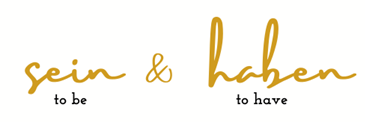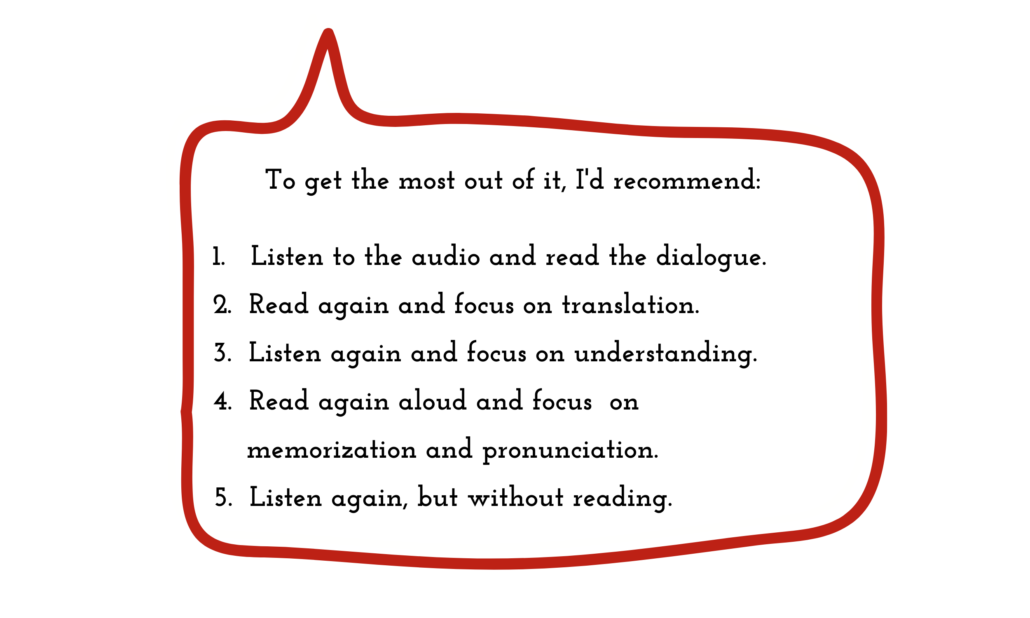Dear Germanee,
In this first series, I’d like to give you a powerful introduction into German language by explaining 26 + 2 verbs following the main-letters of the German alphabet.
To exemplify the use of these verbs in our everyday language, you’ll find short dialogues, consistently oriented on naturally spoken German. Followed by short texts, which will be kind of a weird mix of German and English to make sure, that German-Newbies will get the most of it, while advanced German-Speakers will still learn something or might find my texts at least amusing. It’s my ambition, to enable you to absorb a wide range of vocabulary along with these verbs, through dialogues and texts.
Bist du bereit? Are you ready?
But, wait a minute: Does everybody know, what a verb is? I’d dare to claim, that verbs are the most important words in every language. Verbs are the action-words in sentences that describe what a subject is doing. Since we all love action, I assume, I want to challenge you to fall in love with verbs.

Before we begin with letter A, I want you first to get friends with the two most basic verbs, we have in German:

These two are so essential, that they want to remind us of their importance all the time. Like divas who always stand out of the crowd. Our sein- and haben-divas just act more irregular with their heroes, compared to all the other verbs you’re going to learn here. So, just accept their VIP-status and give them what they want: attention!
|
Verb basic form |
Singular |
Plural |
||||
|---|---|---|---|---|---|---|
|
ich I |
du you informal |
er/sie/es he/she/it |
wir we |
ihr you |
sie/Sie they/you formal |
|
|
sein |
bin |
bist |
ist |
sind |
seid |
sind |
|
haben |
habe |
hast |
hat |
haben |
habt |
haben |
As you can see in that table, both verbs change its spelling from slightly to completely different, depending on the acting hero aka pronoun.
Please, do not get scared here! These two behave just exceptional and therefore you should learn them by heart. But, since you’ll use them a lot as a German speaker, they’ll easily stick in your mind and reward you with loads of opportunities to express yourself.
And now, let’s see how to use haben and sein in action:
Jens and Lena meet and chat at Christina’s birthday party. Christina is their common friend.

| JENS | Hi! Ich bin Jens. Ich bin ein Freund von Christina. Und wer bist du? Hi! I am Jens. I am a friend of Christina. And who are you? |
| LENA | Hallo Jens. Freut mich. Ich bin Lena. Hello Jens. Happy to meet you. I am Lena. |
| JENS | Hey, Lena. Freut mich auch. Du bist Christinas Nachbarin, oder? Hey, Lena. Nice to meet you too. You are Christina’s neighbor, aren’t you? |
| LENA | Ja, genau. Jonas, mein Mann, und ich sind Christinas Nachbarn. Yes, exactly. Jonas, my husband, and I are Christina’s neighbors. |
| JENS | Ok, super. Wo ist Jonas? Ist er auch hier? Ok, great. Where is Jonas? Is he also here? |
| LENA | Nein, Jonas ist zu Hause. Wir haben zwei Kinder. Sie sind noch klein. No, Jonas is at home. We have two children. They are still little. |
| JENS | Oh, wow! Ihr habt schon Kinder? Cool. Oh, wow! You have already children? Cool. |

Since I translated every line from German into English, you’ll see that both languages have many similarities. But still, please keep in mind that we can’t translate word by word from one language into another. Some phrases you should just learn as a whole.
Aside from that, you’ll discover that word order in German sentences is a bit different. Although, it might sound weird and funny, I keep the German word order for all English translations. I believe, it’ll help you to get quickly familiar with the structure of German language.
Dear Germanee, I hope you enjoyed this little introduction into the world of German verbs.
I’m very curious to learn a little bit more about you.
It would be great, if you could leave me your comment to tell me:
Wer bist du?
Who are you?
and
Wo bist du?
Where are you?
Wishing you a germanful day,
deine Tina Heimberg
P.s. After thinking so intensively about sein and haben, an amazing book came to my mind: TO HAVE OR TO BE? by Erich Fromm, a psychoanalyst and philosopher. He was a German Jew, who emigrated to the US to flee the Nazis in 1933. In his book, Fromm analyzes the differences between having and being within our societies. He points out that we as humans exist more and more in the having-mode while losing our actual true being-mode. He found out that these changes reflect in our behaviors, relationships and even in our languages.
Although, Fromm’s THE ART OF LOVING might be more popular, that one is definitely also an excellent read.
